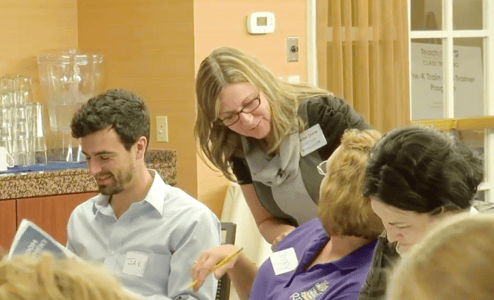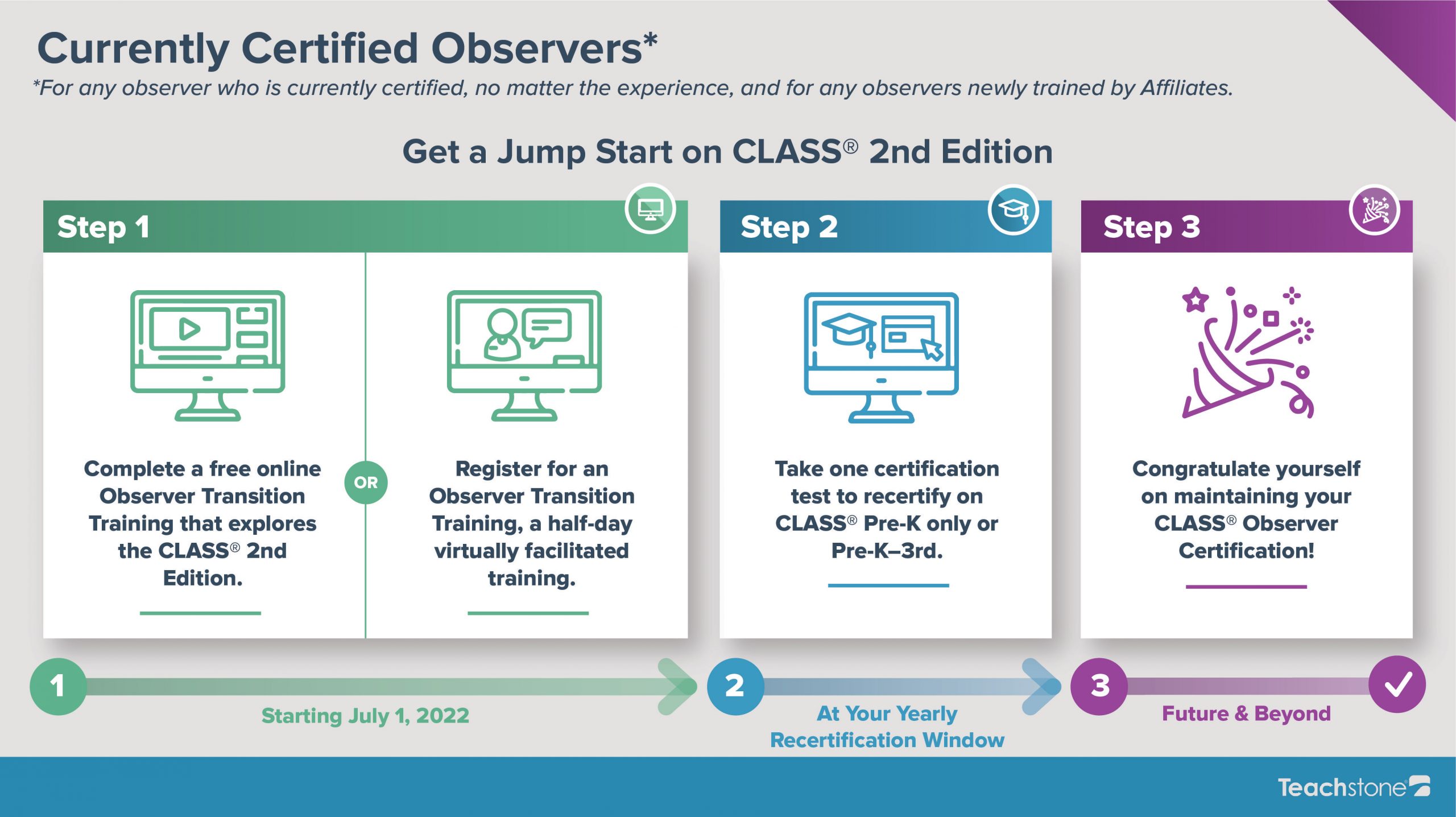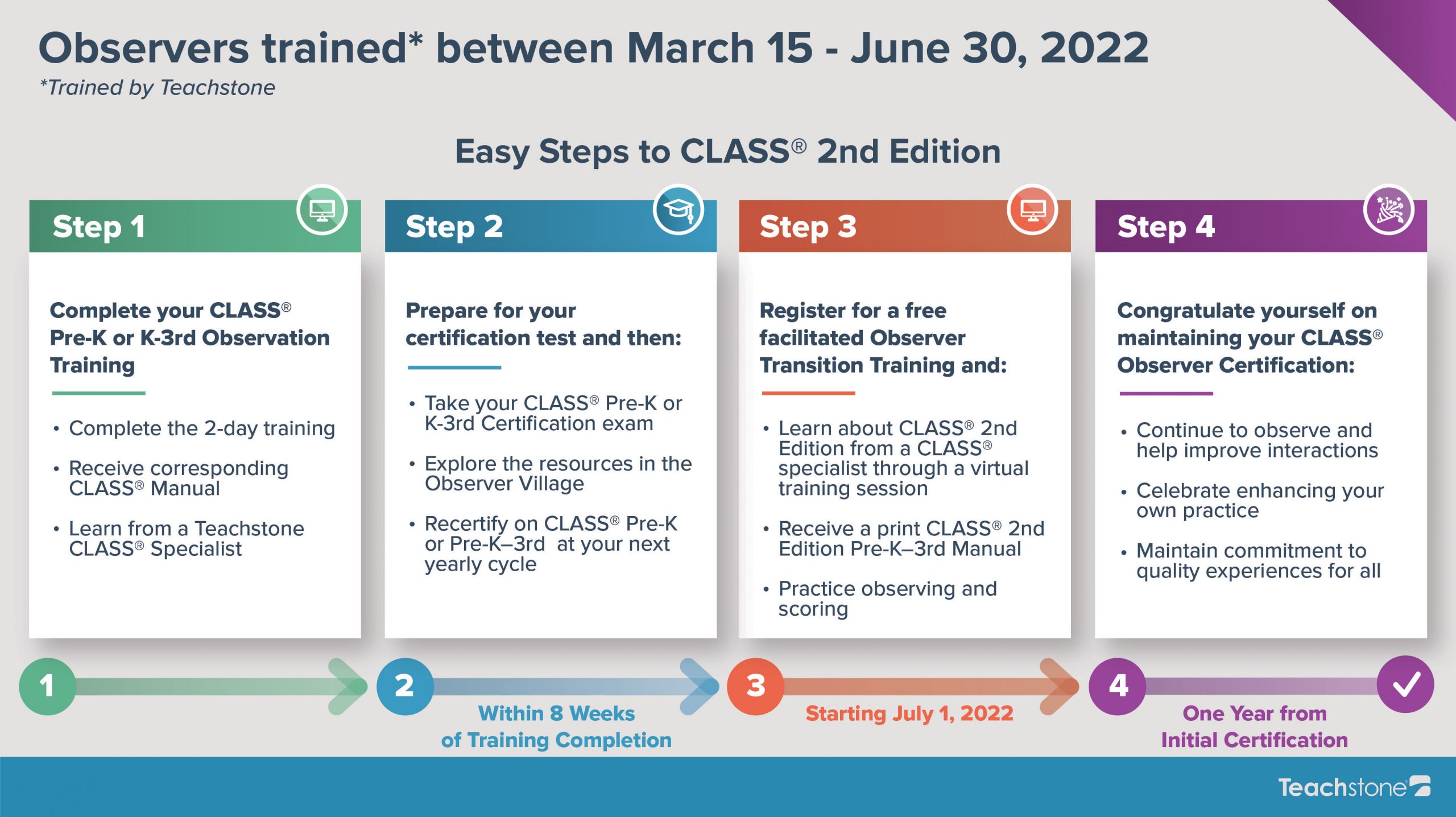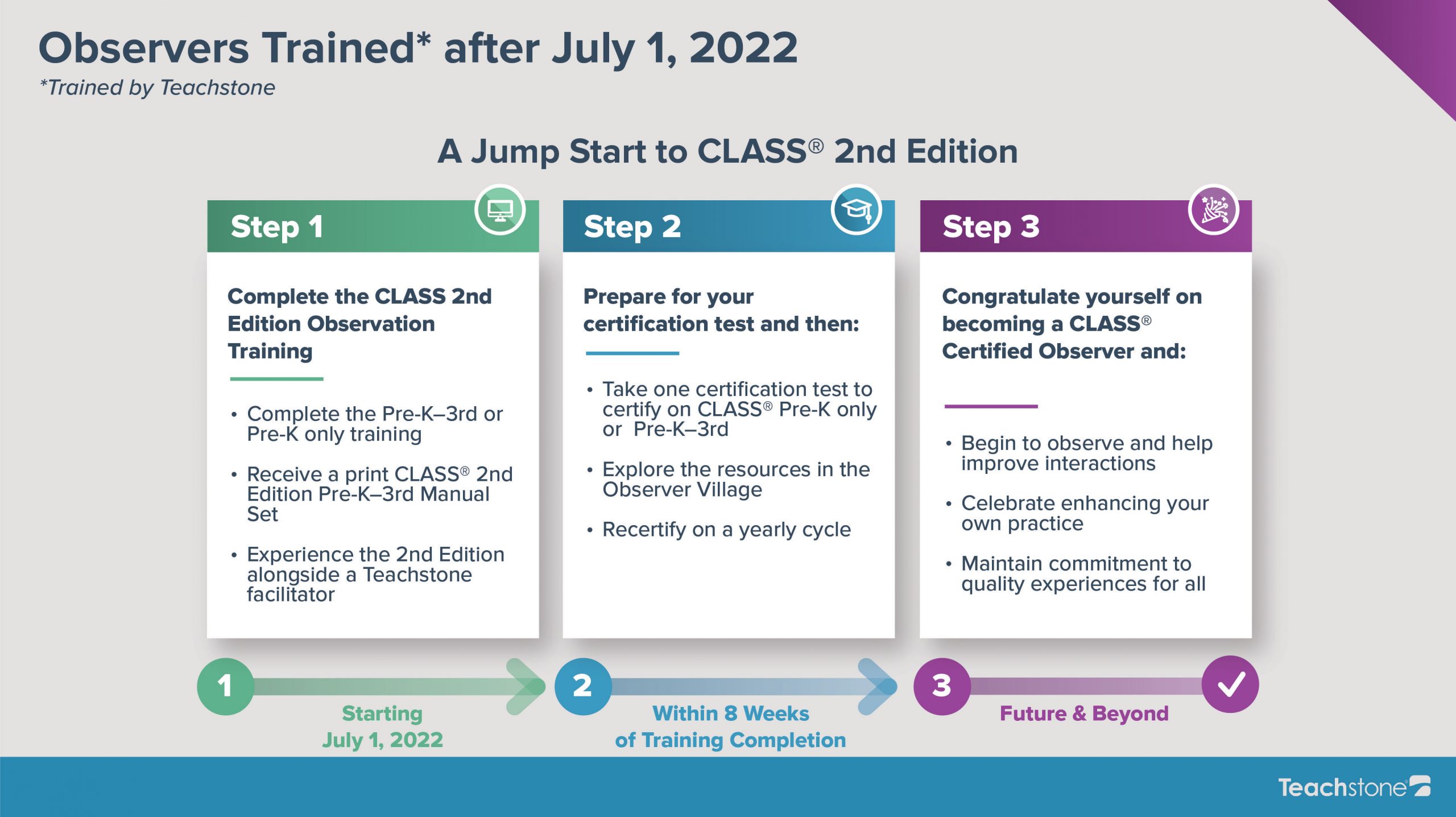
IIn our recent webinar, Making the Move to CLASS® 2nd Edition, we shared how programs and individuals can begin to experience and use the enhanced Pre-K–3rd CLASS tool. Certified CLASS observers play a critical role in helping every child reach their full potential.
Without reliable and valid data on the quality of educator-child interactions, programs and educators would not have the actionable insights they need to make continuous quality improvements in the areas that matter the most for children.
During the development of CLASS 2nd Edition, we wanted to ensure that observers had the support they needed to best fulfill their responsibilities.
With CLASS 2nd Edition, observers can:
Save time recertifying and observing
CLASS 2nd Edition streamlines the training and certification processes by combining the Pre-K and K-3 tools into one. With the 2nd Edition, observers can choose to certify on Pre-K only, or take one reliability certification and become certified to observe across Pre-K to third grade classrooms.
And, CLASS 2nd Edition encompasses a new optional training and measure of quality, CLASS Environment. Used alongside the CLASS tool, CLASS Environment ensures observers can collect observational data points on interactions and the environment within one, single observation. This allows observers to save time in collecting this observational data, and reduces disruptions to the classrooms as well!
Increase their confidence and ability to effectively observe
With CLASS 2nd Edition, the Observation Training has been reimagined and redesigned to be more engaging, more comprehensive, and a better learning experience overall. These enhancements include new diverse examples, all new classroom videos, and additional guidance for reducing bias and observing across a diversity of settings and contexts.For observers who are already CLASS certified, the new concepts and enhancements will be found in the Observer Transition Training and Supports so that observers have the opportunity to build their understanding of equitable observations.
As part of the release of CLASS 2nd Edition, on-demand CLASS Observation Support Trainings are available at no additional cost to all certified observers, giving them additional opportunities to learn how to best observe across settings, such as settings with dual language learners.
And, the CLASS 2nd Edition Manual has been updated to make using the CLASS tool easier than ever. Observers will love the streamlined Observation Field Guide that gives them what they need to complete an observation, as well as the easy-to-understand and clearer dimension and indicator language.
Collect more actionable data
Simply measuring the quality of educator-child interactions does not improve the interactions. To make quality improvements that drive impact, data should be actionable at the individual and programmatic level. With CLASS 2nd Edition, observers will receive additional support to ensure the data that is being collected can be easily used to design quality, data-driven improvements.
New scoring strategies will also be shared across the Manual, Observation Training, and transition supports. First, assigning ranges at the indicator level is now a formalized step within the scoring process, with clear guidance provided on how best to achieve a reliable and valid score. Additional data collection points are provided to measure the content exposure occurring within a classroom, capturing both the type of content and the format of delivery.
And, the myTeachstone Observation Data Collection tool is being updated to streamline this data collection and provide reports that generate automated feedback that identifies strengths and opportunities based on the indicator score.
Evolving to CLASS 2nd Edition
CLASS 2nd Edition is an evolution—an evolution of the tools, and an evolutionary process to getting all programs, and observers using the updated tools. As with any evolution, this transition process is gradual and will occur over time.
As of July 5, 2022 all currently certified Pre-K and K-3rd observers will have access to:
- Online Transition Supports that can be accessed, viewed, and completed on-demand, at their own pace and leisure
- Digital (read-only) access to the CLASS 2nd Edition Pre-k–3rd Manual Set
*Once these resources are available, additional communication will be sent out to certified observers with how to access the supports. And, future trained observers will receive access on an ongoing basis.
Once the CLASS 2nd Edition Pre-k–3rd Manual Set is available, observers can review the transition support materials and can begin using and/or incorporating the enhancements from the 2nd Edition into their observations of the age-levels they are currently certified… there isn’t a need to “recertify” on the 2nd Edition specifically!
Impacts to Recertification
Certified observers can stay on their yearly recertification cycle. If recertifying ahead of July 5, 2022, observers will see no change to the recertification process and will engage in the updated experience at their next yearly recertification. After July 5, 2022 observers will have the option to recertify on Pre-K only or on the combined Pre-K–3rd age level, and can bundle their recertification with a printed CLASS 2nd Edition Pre-K–3rd Manual Set.
While not required, it is recommended that ahead of recertification observers engage in their own continuous learning and review the transition supports available to them, especially if certifying on the combined age level for the first time.
Additional specifics and recommendations for recertification processes for certified observers:



We know change of any kind and of any size can be uncomfortable. But, we are excited for the future impact that the enhancements made in CLASS 2nd Edition will have. Together, we will see that every child has the opportunity to experience life-changing interactions.
Additional Support
Looking for even more information and guidance around CLASS 2nd Edition? We’re here to help!
- Learn more about CLASS 2nd Edition.
- Review what CLASS 2nd Edition means for educators, administrators, coaches, and affiliates .
- Explore the full CLASS 2nd Edition FAQ.

